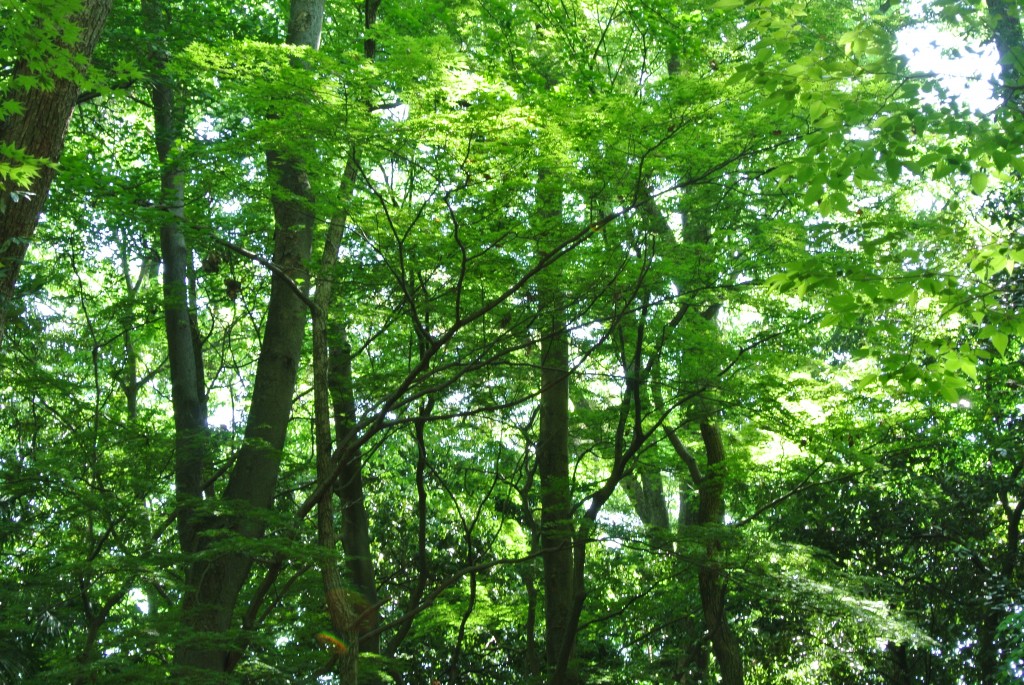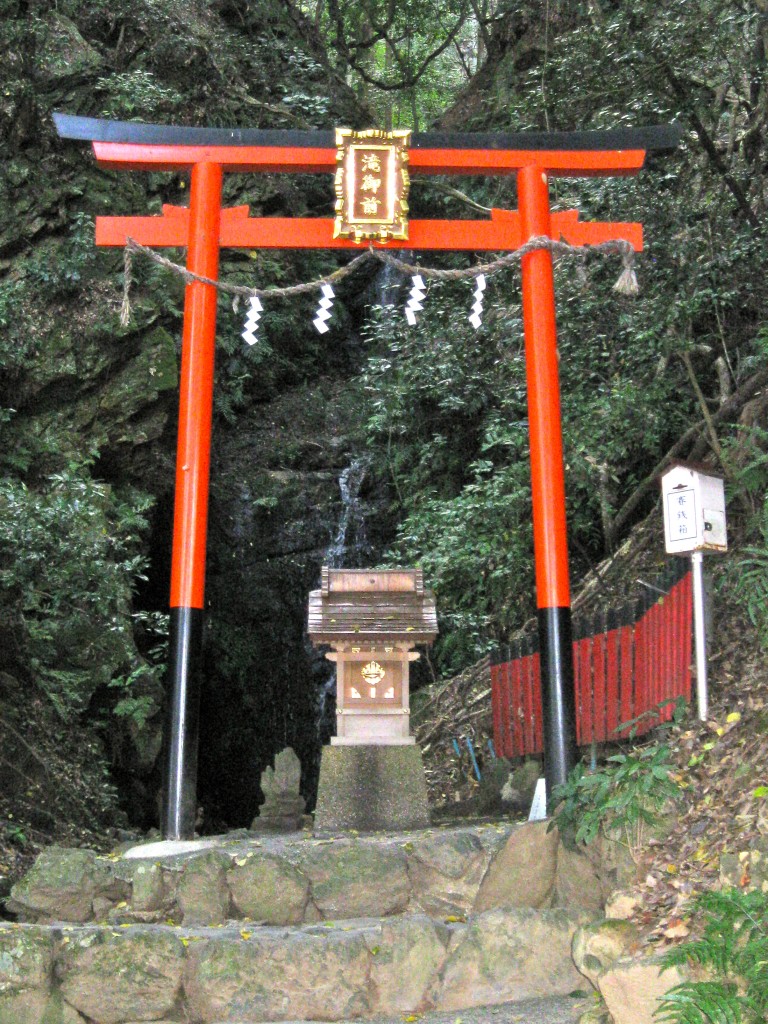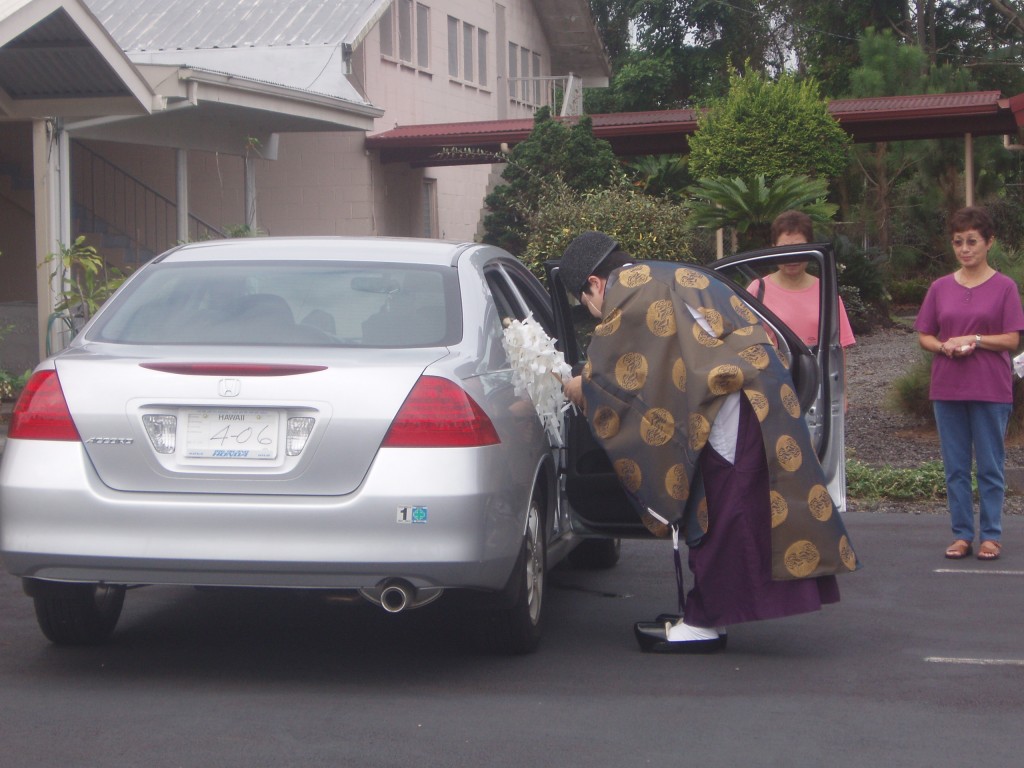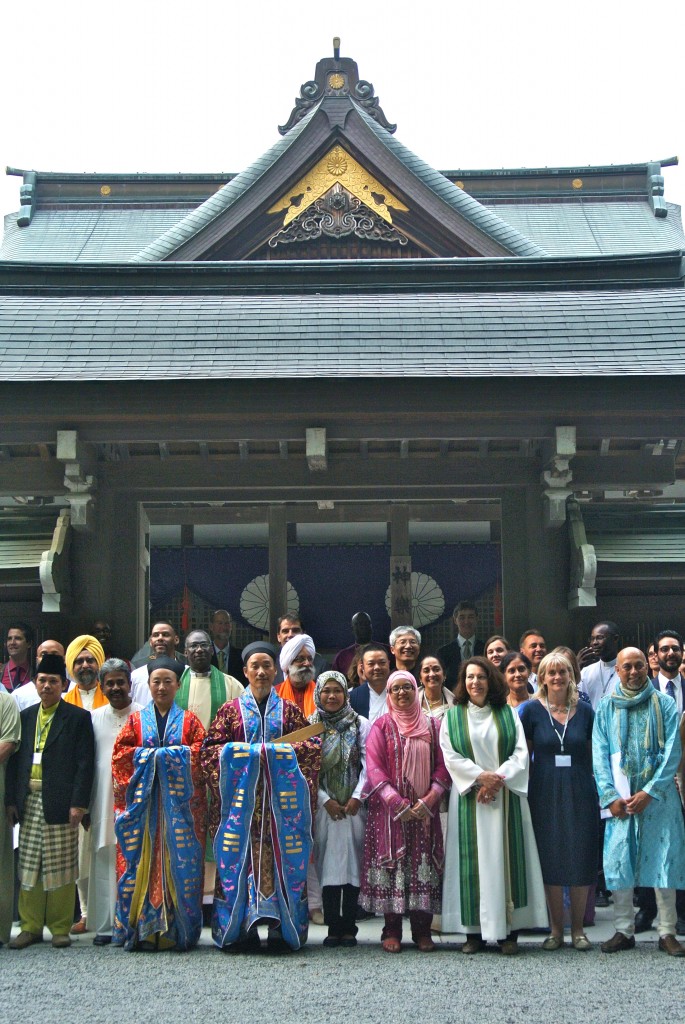
New greenery at Tadasu no mori, Shimogamo Shrine’s sacred grove. These abodes of the kami are held up as shining examples of Shinto’s greenness, but preserving a grove can go hand-in-hand with environmentally destructive policies elsewhere.
Michael Pye is an English academic who has worked at Marburg and Kyoto. He is on the committee of ISSA (International Shinto Studies Association) and has just published what looks like an interesting book on Japan’s Buddhist pilgrimages. On the academic.edu site, he has recently posted a revised version of a talk on the environment and Shinto he first gave in 1995 entitled Can Shinto think Green?
The conclusions Pye reaches are central to the concerns of Green Shinto, and the premises on which they are based will be of interest to the readers of this blog. Many Westerners are drawn to Shinto in the belief that as a nature religion it must be ‘green’, but within Japan such thinking seems simplistic. ‘In fact, Shintō, like most religions, has a somewhat ambivalent relationship to environmental matters,’ writes Pye.
What follows is a summarised account of the paper, and quotations are given with the permission of the author. (The full paper of ‘Can Shinto think Green?’ can be accessed here.)
*********************************************************
Can Shintō think Green? Introductory Remarks on Shintō, the Environment and Industry
by Michael Pye, Marburg.

Sacred waterfall at Matsuo Taisha. Shinto is particularist, and not all waterfalls are sacred…
One of the first issues Pye addresses is the orientation of Shinto in terms of ethics, and he notes the juxtaposition of ‘a religion of the Japanese people’ which ‘mainly promotes a national perspective’ as opposed to the universal nature of the environmental crisis. In terms of Shinto’s early development which grew out of its close relationship to nature, Pye asserts that it was ‘a question of the regulation and manipulation of natural forces, rather than of any kind of romantic love of nature.’ Moreover, as Green Shinto has noted on previous occasions, it is by no means evident that worship of particular items of sacralised nature leads to any significant change in environmental attitude or behaviour. The conservation of sacred trees for instance has gone hand in hand with the large-scale destruction of forests in south-east Asia .
In terms of moral values, Pye notes the emphasis on purity, sincerity and honesty. He notes too a contrast between the particularism of Shinto, whose concern is broadly limited to the frontiers of Japan, and the universalism of Buddhism. Given that water, air and sunshine are shared by humankind, Pye suggests that geographical restrictions are out of place in the face of a global crisis and that, while refraining from being seen to meddle in Japan’s affairs, ‘It is good to emphasize that progressive efforts for environmental protection would meet with world-wide recognition. That is always welcome.’
Pye then gives a concrete example of how change might be encouraged in Japan, which is worth quoting here at length:
Calling for a change of attitude is best done in conjunction with political and economic pressure. Specially targeted conferences and symposia are probably the most effective means of mounting influence from outside Japan, because they are often reported in the media. Responsible participation can be encouraged by the psychologically effective method of planning such symposia on the basis of mutual partnership and exchange.
International collaboration is one way of drawing Shinto into matters of universal concern.
A meeting on environmental questions in Germany, for example, could be complemented by a follow-up meeting to be held in Japan, and so envisaged in the planning stage. Moreover, funding is more likely to be forthcoming. Since the meeting in Japan then refers back to the previous meeting in Germany, it is able to have a much stronger effect on public opinion. For similar reasons, the participation and financial support of industry in both countries should be aimed at. Support in the form of subsidies only may lead into the blind alley of alibi-production, and would be analogous to the donations which flow from the major Japanese companies to the Shintō shrines. Such donations have above all an exorcising function and are supposed to ensure peace, safety and prosperity. It is therefore desirable to have direct representation from industry to industry, in the presence of other experts, ensuring that the environmental aspect remains on the agenda.
By way of conclusion, Pye considers whether Shinto representatives will be prepared to truly ‘go green’, or whether they will just use the word ‘nature’ as a feelgood factor to win popularity. In other words, will the Shinto establishment adopt ‘greenwashing’ as a tactic to project a sympathetic image? Noting that Shinto is an adapted primal religion, he states that throughout history it has undergone change reactively rather than proactively. If indeed it is to be truly a nature religion rather than a national religion, then it will probably need to be nudged in the right direction.
‘So, in the last analysis,’ Pye concludes, ‘there is a question to be posed. Are Shintō leaders prepared to think “green”? The question is urgent.’

Westerners sometimes have an idealised view of Shinto as a religion of nature worship, but Shinto in Japan often has concerns that are far removed from environmentalism.


Leave a Reply